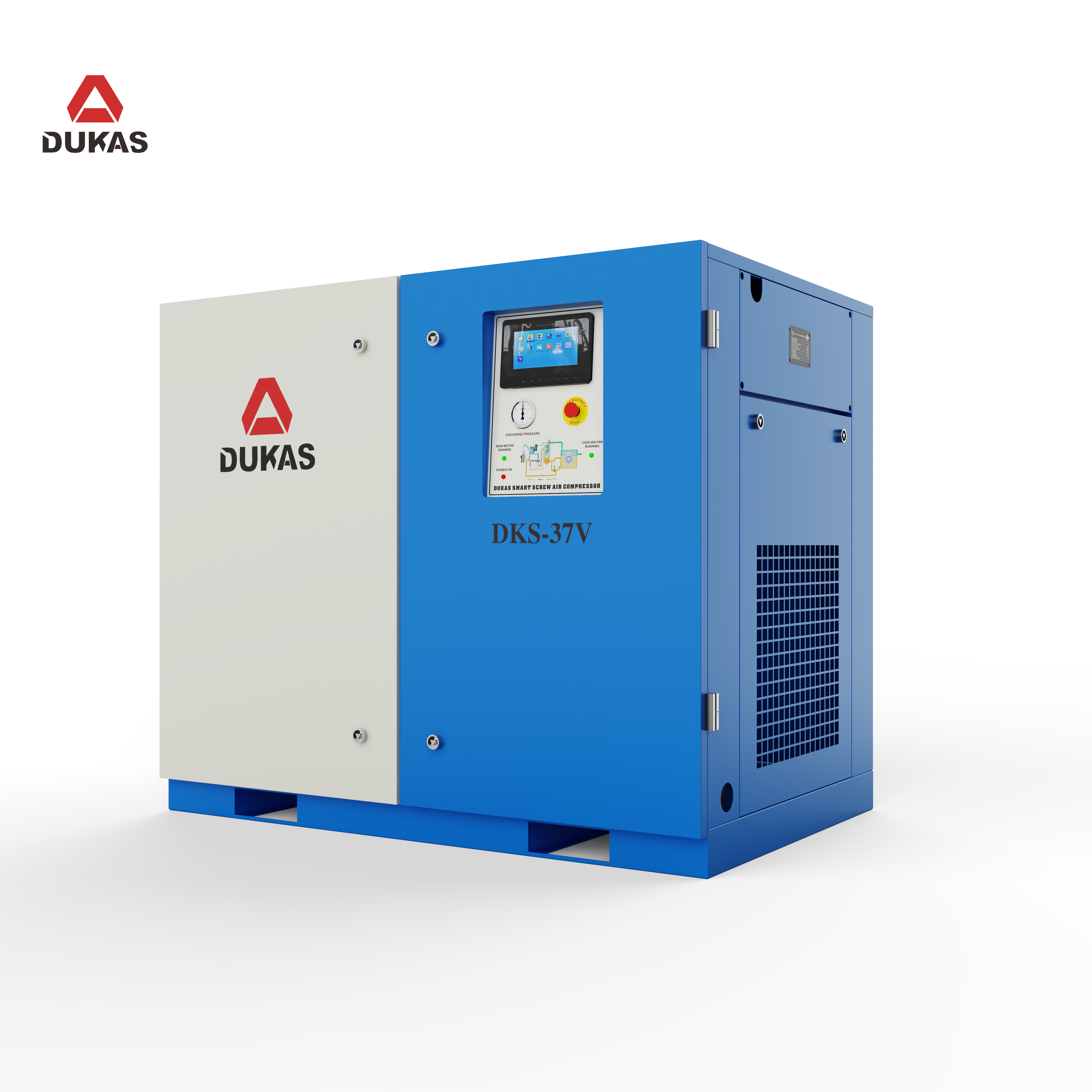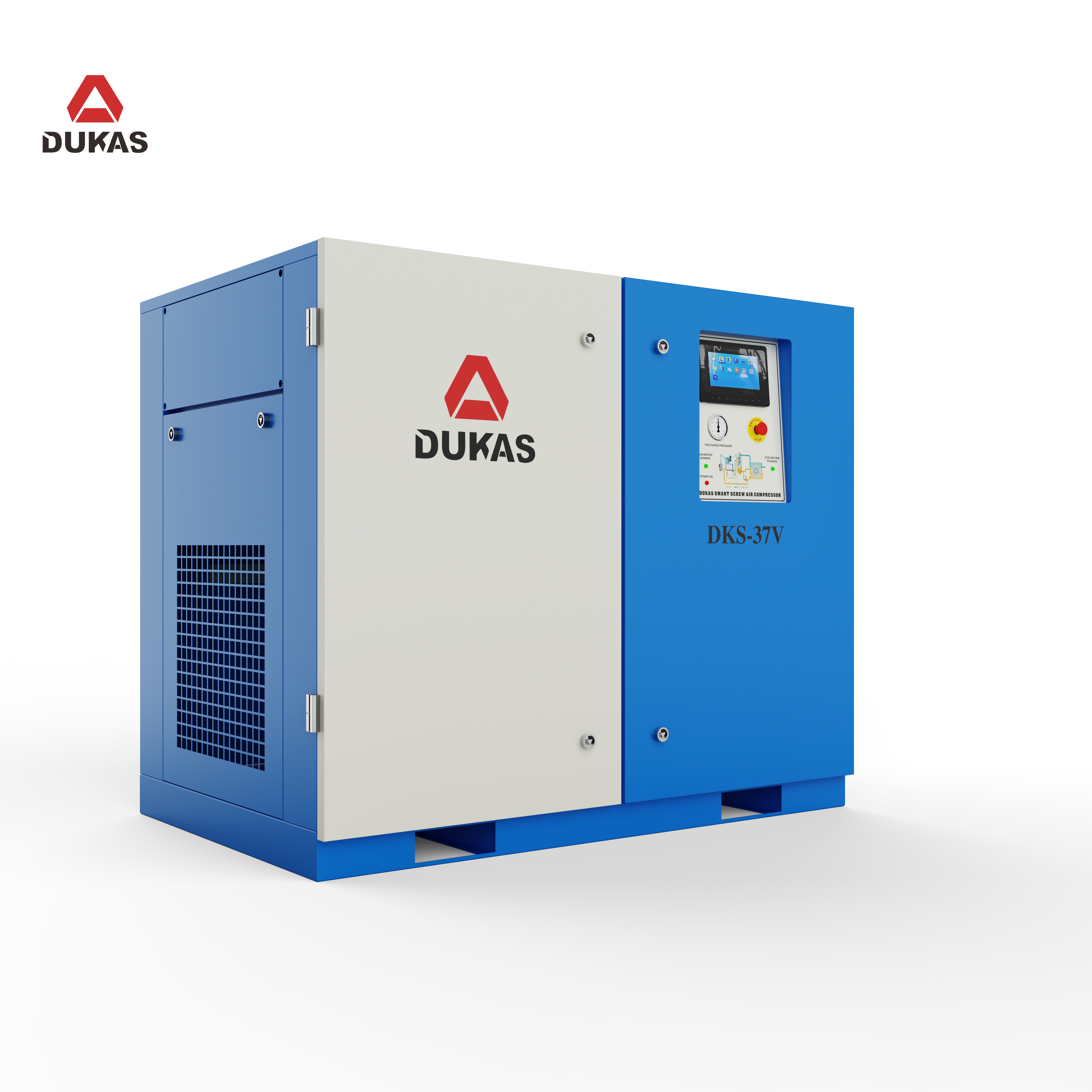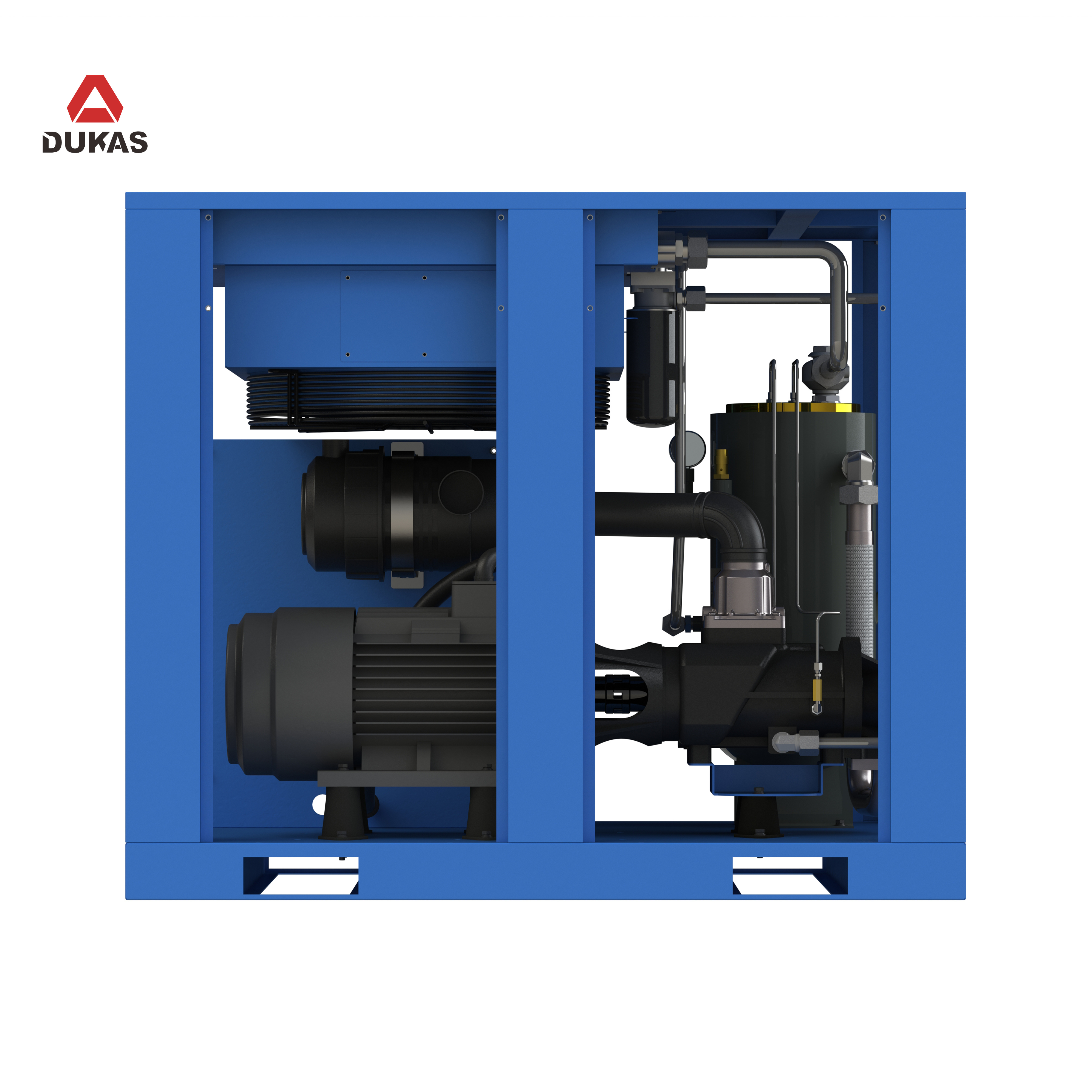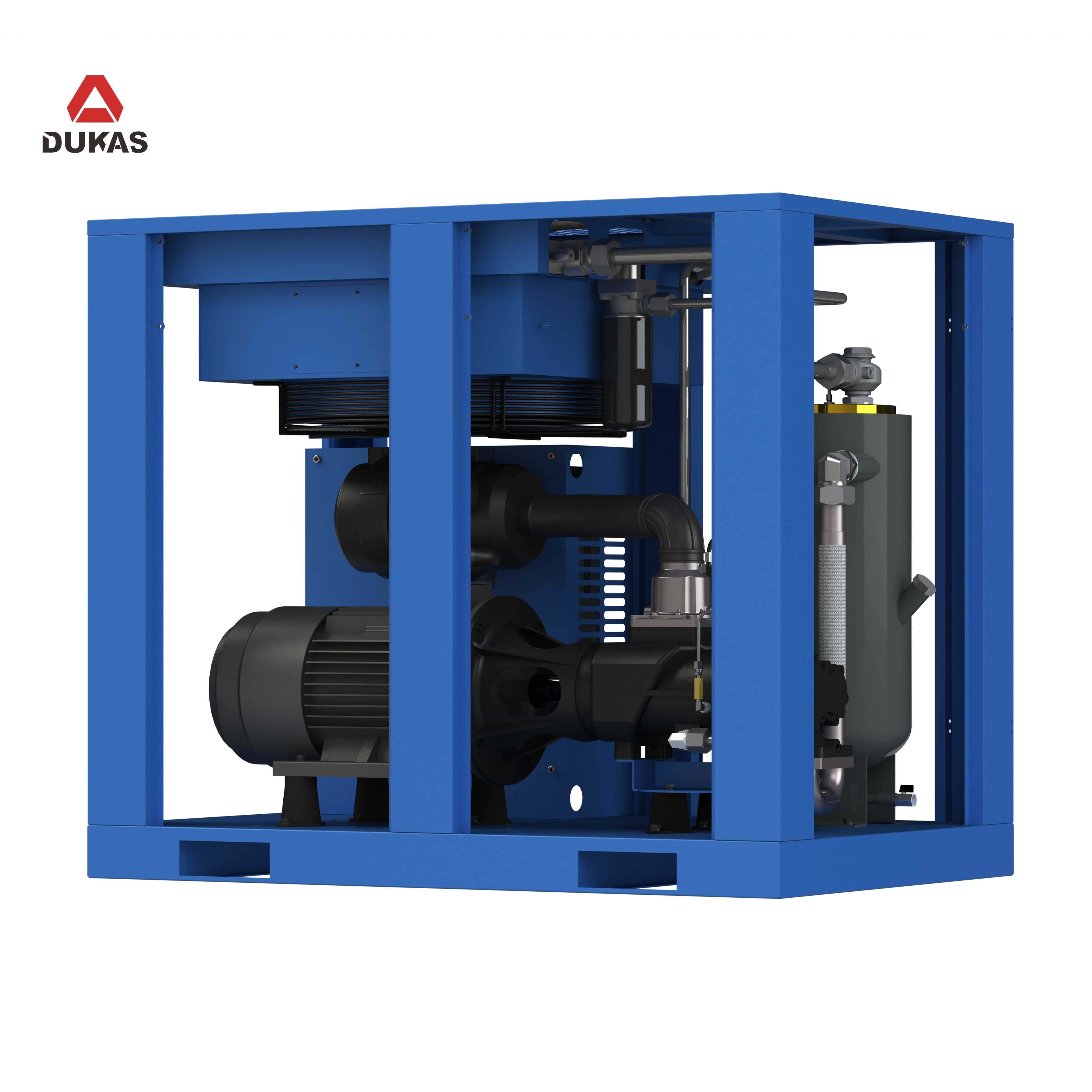Орчин үеийн үйлдвэрлэлийн чиглэлээр ажилладаг. Шургийн агаарын компрессор нь шахсан агаарыг өгөхөд чухал үүрэг гүйцэтгэдэг. Шатны синтехийн, химийн синталь цөхлөгт ороход хялбар машин үйлдвэрлэх үйлдвэрлэгчид боловсруулах, шураг агаар үйлдвэрлэх, бие үнэмлэх биежүүлэх чанар, тогтвортой бүтэц гаргахад чухал баталгаа. Гэсэн хэдий ч механик төхөөрөмж, шураг агаарын компор эсвэл АЖИЛЛАГААНЫ АЖИЛЛАГАА, АЖИЛЛАГААНЫ АЖИЛЛАГАА. Мөнгөлэгээ нь тогтмол байлгах ба Засирхан гэж хяналт байхгүй энэ түрээсийн амьдрал, сунгах ижил түлхүүр юм. Гэхдээ бүрэн үйлдвэрлэлийн аюулгүй ажиллагааны аюулгүй байдал, үргэлжлүүлэхэд шаардлагатай арга замууд юм. Энэхүү зүйлийг дарцгалаа, боолтын агаарын компрессорын засвар, засвар үйлчилгээний явцыг аль болох хурдан ярилцах болно. Намайг шүүмжилж, залруулна уу.


I. Ажлын байрны зарчим, шураг агаарын компрессорын ач холбогдол
Shell Rotor Rotorloct (эрэгтэй ротор ба эмэгтэй ротор ба эмэгтэй ротор ба эмэгтэй ротор) дамжин өнгөрөх, агаарын сорох, эцсийн даралт, эцэст нь өндөр даралттай хий ялгаруулдаг. Энэхүү загвар нь энгийн бүтэц, гөлгөр бүтэц, гөлгөр, бага дуу чимээ, бага дуу чимээтэй, мөн тасралтгүй хийн хангамжийг шаарддаг.
Түүний ач холбогдол нь дараахь зүйлийг тусгасан болно.Поршений агаарын компрессортой харьцуулбал шураг агаарын компрессор нь үйлдвэрлэлийн зардлыг бууруулахад тусалдаг.
Тогтвортой, найдвартай:Шураг дизайн нь чичиргээг бууруулж, өмсөж, тоног төхөөрөмжийн тогтвортой байдал, найдвартай байдлыг сайжруулдаг.
АЖИЛЛАГАА ХИЙЖ БАЙНА:Модульт загвар нь засвар, засварыг илүү тохиромжтой болгодог бөгөөд цаг хугацааг багасгах.
II. Өдөр тутмын шалгалт: Алдаа дутагдлыг урьдчилан сэргийлэхийн тулд Батлан хамгаалахын эхний мөр
Өдөр бүр хяналт шалгалт нь шураг агаарын компрессорын засвар, бичлэг, энгийн ажиглалт, энгийн тохируулга, энгийн алдаатай байж болно.
Газрын тосны түвшин шалгах:Тосолгооны тос нь заасан масштабтай шугам дотор байгаа эсэхийг шалгаарай.
Яндангийн температур:Хэвийн нөхцөлд, яндангийн температур нь тогтоосон хүрээ дотор хэлбэлзэл хэлбэлзэл, хэт өндөр нь хөргөлтийн догол мөр, шүүлтүүрийн бөглөрөлийг илтгэнэ.
Ашиглах үзлэг:Шатахуун, уурын тусгаарлагч, Хоолойн холболт, битүүмжлэл, битүүмжлэл, битүүмжлэл, газрын тос, даралтын уналтаас урьдчилан сэргийлэхийн тулд аливаа алдагдлыг цаг тухайд нь зохицуулах хэрэгтэй.
Чичиргээ ба чимээ:Хэвийн бус чичиргээ, дуу чимээ нь ихэвчлэн сул, өмсдөг, элэгддэг ба өмсдөг бөгөөд цаг тухайд нь шалгах шаардлагатай байдаг.
III. Тогтмол засвар үйлчилгээ: Тоног төхөөрөмжийн гүйцэтгэлийг хадгалах түлхүүр
Тогтмол засвар үйлчилгээ нь шураг агаарын компрессорын урт хугацааны тогтвортой тогтвортой тогтвортой үйл ажиллагааг хангах явдал юм. Ашиглах давтамж, ажлын орчноос хамаарч засвар үйлчилгээний мөчлөгийг сар бүр, улирлын болон жилийн хувьд тохируулж болно.
Тосолгооны тос, газрын тосны шүүлтүүрийг орлуулаарай:тосолгооны тос нь зөвхөн ротор, холхивчийг тослохгүй, гэхдээ бас хөргөлт, битүүмжлэх, битүүмжлэх үүрэг гүйцэтгэдэг. Газрын тосны шүүлтүүр нь хольцыг торгож, газрын тосны цэвэр байлгах үүрэгтэй. Энэ нь ерөнхийдөө 2000-4000 цаг тутамд орлуулахыг зөвлөж байна.
Хөргөлтийн системийг цэвэрлэх:Хөргөгчний гадаргуу нь тоос шороо, шороог хуримтлуулахад хялбар бөгөөд янданг тарааж, яндангийн температур нэмэгдэхэд хүргэдэг. Шахсан агаар эсвэл тусгай цэвэрлэгээг тогтмол ашиглахын тулд хөргөгчийг цэвэрлээрэй.
IV. Мэргэжлийн засвар үйлчилгээ: Нарийн төвөгтэй асуудлыг гүн гүнзгий шийдэл
Өдөр бүр хяналт шалгалт, тогтмол засвар үйлчилгээ нь асуудлыг шийдвэрлэх боломжгүй, мэргэжлийн мэргэжлийн засвар хийх шаардлагатай болно. Энэ нь ихэвчлэн дараахь зүйлийг агуулдаг.
Ротор ба бүрхүүлийн цэвэрлэгээний тохируулга:Удаан хугацааны турш ажилласны дараа роторын хоорондох цоорхой, бүрхүүлийн хоорондох цоорхой нь буурч, шахалтын үр ашгийн бууралтад хүргэж болзошгүй юм. Тоног төхөөрөмжийг сэргээх мэргэжлийн хэрэгслээр хийсэн цоорхойг хэмжиж, тохируулна уу.
Цахилгаан системийн засвар үйлчилгээ:Мотор, гарааны бүрэлдэхүүн хэсгүүдийг шалгаж, цахилгаан холболтын самбар гэх мэт цахилгааны бүрэлдэхүүн хэсгүүдийг шалгана уу, цахилгаан холболт найдвартай эсэхийг баталгаажуулах, богино хэлхээ, нээлттэй хэлхээ, нээлттэй хэлхээ байхгүй байна.
Даралтын хяналтын системийн тохируулга:Даралтын унтраалга, даралт мэдрэгч ба бусад бүрэлдэхүүн хэсгүүд болон бусад бүрэлдэхүүн хэсгүүд нь агаарын компрессорын даралтын горимд шууд нөлөөлдөг. Тогтвортой, найдвартай даралтын хяналтыг хангахын тулд тогтмол шалгана уу.
Чичиргээний дүн шинжилгээ ба алдаа онош:Агаарын компрессорын давтамжийн спектрийн давтамжийг шинжлэх, сулрал, сул, өмссөн хэсгүүд,


V. Ухаалаг засвар үйлчилгээ: Ирээдүйн чиг хандлага
Интернетэд Интернетийг боловсруулах, ухаалаг засвар үйлчилгээ аажмаар шураг агаарын компрессорын засварын шинэ хандлага болж байна. Мэдрэгч болон алсын хяналтын хяналтын системийг суулгаснаар агаарын компрессор дахь улсын компрессор дахь төлөвийг хянах боломжтой.
Алсын хяналт:Хэрэглэгчид агаарын компрессорын ажлын байрны ажлын статусыг гар утас эсвэл компьютерээр алсаас үзэх боломжтой, аномалуудыг цаг тухайд нь олж, арга хэмжээ авах боломжтой.
Мэдээлэл шинжилгээ:Тоног төхөөрөмжийг урьдчилан цуглуулсан нийт хэмжээний мэдээллийг алгоритмаар ангааж, засварын төлөвлөгөөгөө оновчтой болгож, төлөвлөсөн хугацааг багасгах.
Ухаалаг оношлогоо:Хиймэл оюун ухаан, Машин сургалтын технологийг хослуулсан, систем нь алдаа дутагдлыг автоматаар тодорхойлох боломжтой, засвар үйлчилгээний дүн, засварын үйлчилгээ, засварын үр ашиг, нарийвчлалыг сайжруулах боломжтой.
Vi. Аюулгүй байдлын үүд
Шургалтын агаарын компрессор, засвар үйлчилгээ, аюулгүй байдал нь үргэлж хамгийн чухал зүйл юм. Аюулгүй байдлын зарим үндсэн арга хэмжээ:
Уналтын ажиллагаа:Засвар хийхээс өмнө цахилгаан хангамжийг таслахаа мартуузаж, санамсаргүйгээр "хаах" сануулга өгөх самбарыг санаарай.
Даралтыг суллах:Засвар хийхээс өмнө агаарын компрессорын дотоод даралт нь өндөр даралтын хийн шархнаас зайлсхийхийн тулд өндөр даралттай байх ёстой.
Хувийн хамгаалалт:Ололог, хамгаалалтын шилжилт, бээлий гэх мэт, дуулга, хамгаалалтын шил, бээлий гэх мэт.
Үйл ажиллагааны процедурыг дагах:тоног төхөөрөмжийн гарын авлага, үйл ажиллагааны болон хувийн гэмтлийг буруугаар ашиглахаас зайлсхийхийн тулд.
Шургийн агаарын компрорурор, засвар үйлчилгээ нь өдөр тутмын хяналт, засвар үйлчилгээ, мэргэжлийн болон мэргэжлийн үйлчилгээтэй холбоотой системчилсэн төсөл юм. Шинжлэх ухааны менежментийн болон болгоомжтой засвар үйлчилгээг ашиглах нь зөвхөн тоног төхөөрөмжийн амьдралыг өргөжүүлж чаддаггүй, үйл ажиллагааны үр ашгийг дээшлүүлж, мөн аюулгүй байдлын осол аваарыг үр дүнтэйгээр урьдчилан сэргийлэх боломжтой. Аж үйлдвэрийн үйлдвэрлэлийн корнерон нь шураг агаарын компрессорыг эрүүлжүүлэх эрүүл ажиллагаа нь илүү их анхаарал, хүчин чармайлт гаргах ёстой. Илүү үр дүнтэй, ухаалаг засвар үйлчилгээ хийх, үйлдвэрлэлийн үйлдвэрлэлийн тогтвортой хөгжөөн дэмжиж, амжилтанд хүрсэн.
Шуудангийн цаг: 10-р сарын 31-20244



